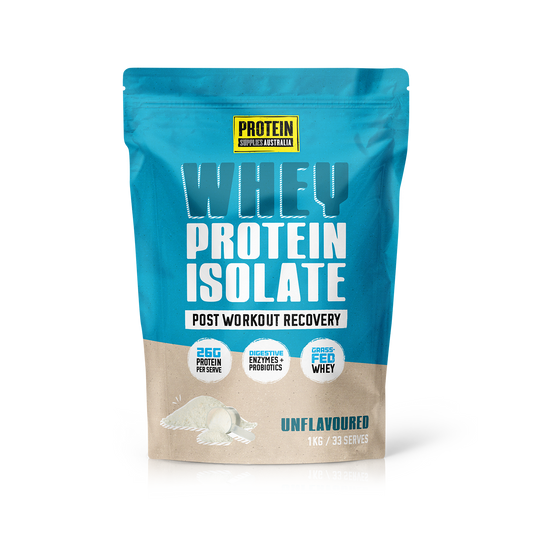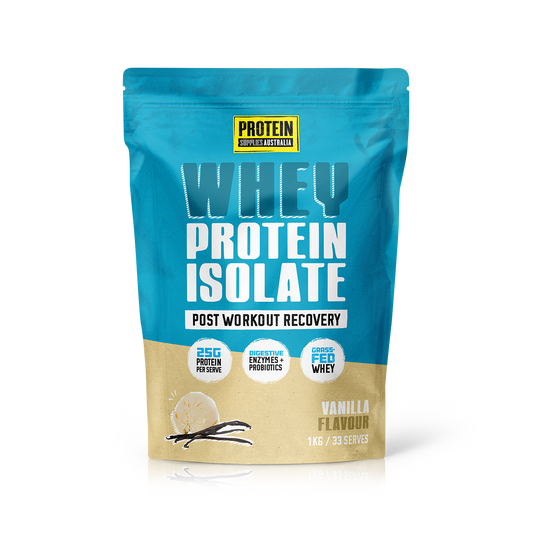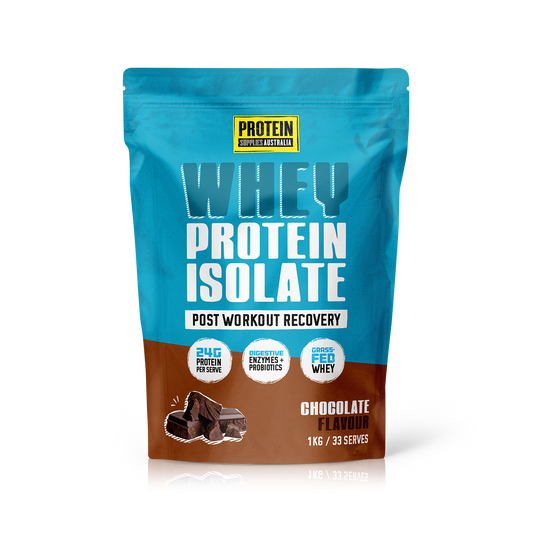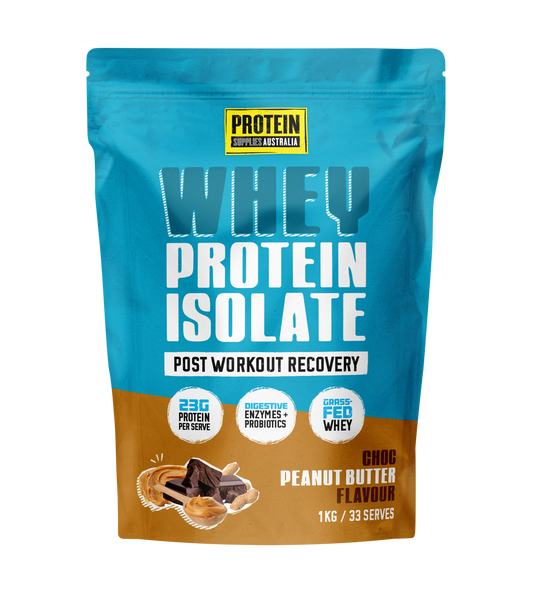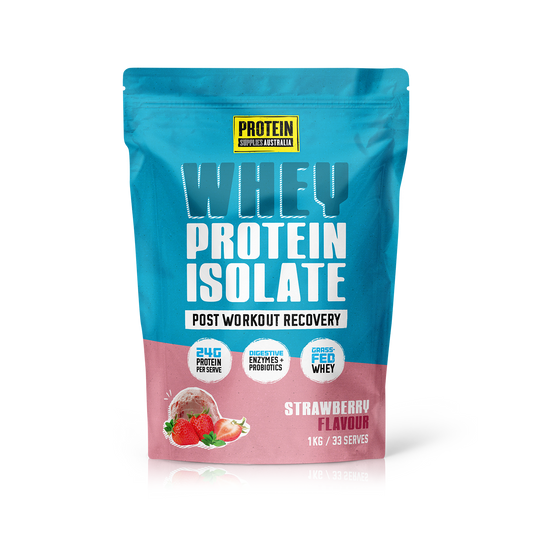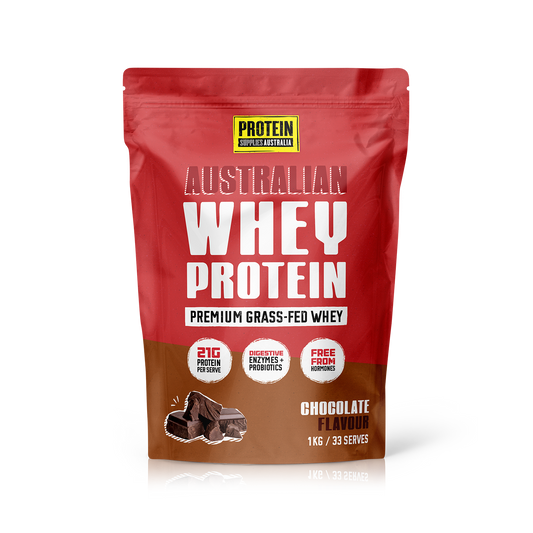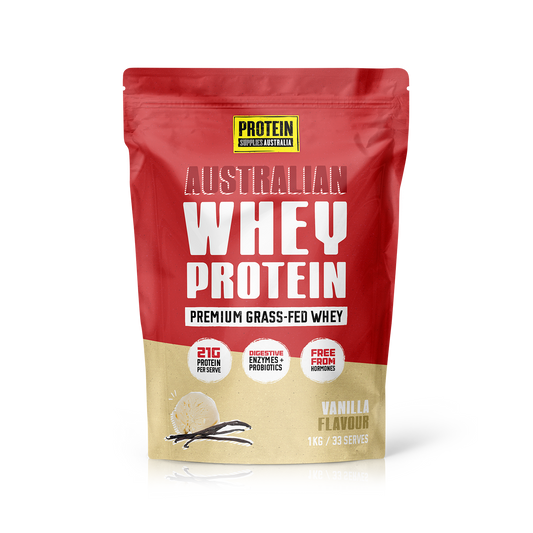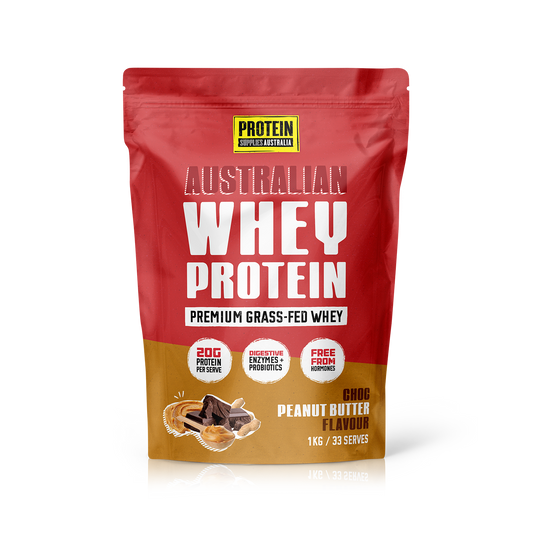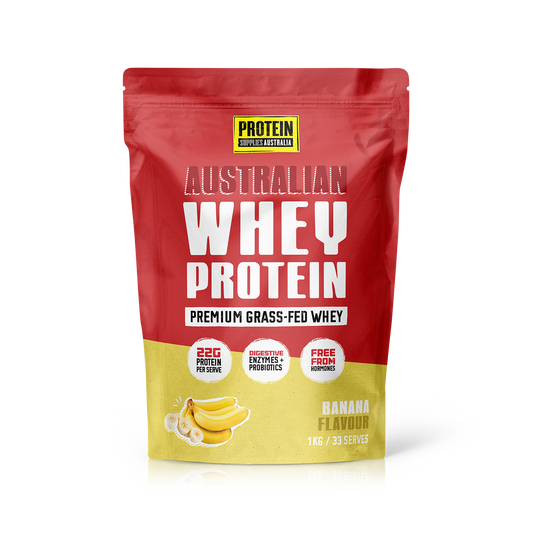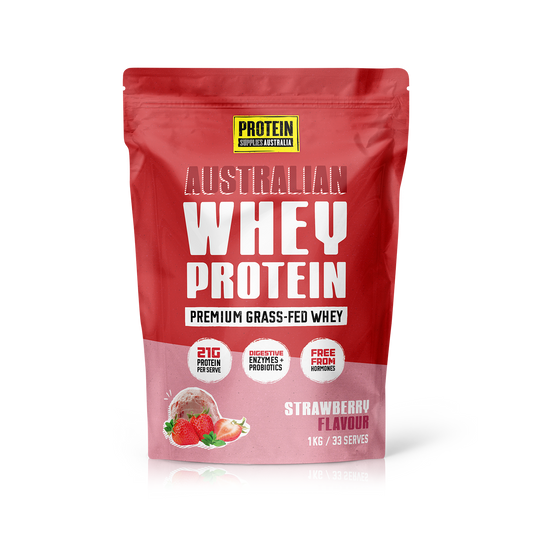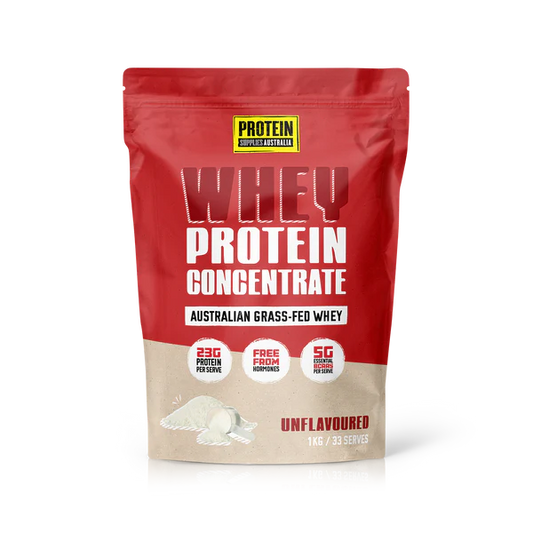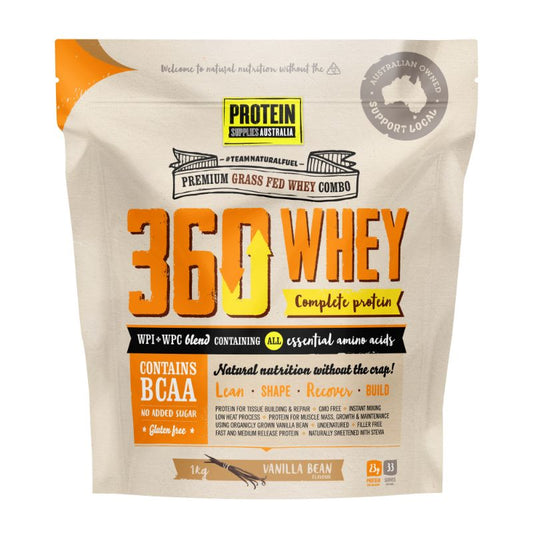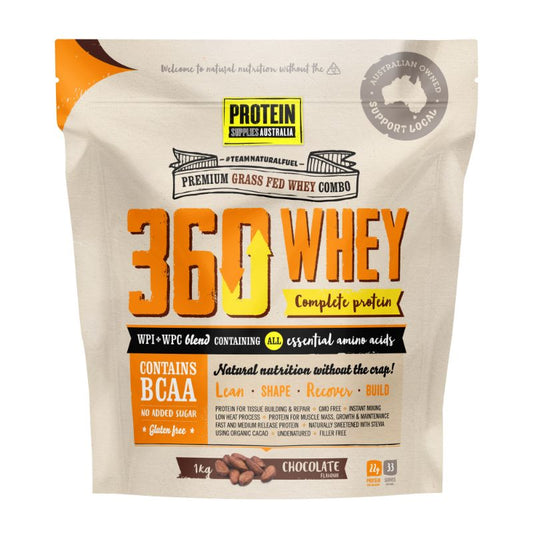-
WPI Vanilla Bean
Vendor:Protein Supplies AustraliaRegular price From $35.16Regular priceUnit price per -
WPI Chocolate
Vendor:Protein Supplies AustraliaRegular price From $35.16Regular priceUnit price per -
WPI Choc Peanut Butter
Vendor:Protein Supplies AustraliaRegular price From $35.16Regular priceUnit price per -
WPI Banana
Vendor:Protein Supplies AustraliaRegular price From $35.16Regular priceUnit price per -
WHEY ISOLATE (WPI) - STRAWBERRY
Vendor:Protein Supplies AustraliaRegular price From $35.16Regular priceUnit price per -
Australian Whey Protein - Chocolate
Vendor:Protein Supplies AustraliaRegular price From $26.56Regular priceUnit price per -
Australian Whey Protein - Vanilla
Vendor:Protein Supplies AustraliaRegular price From $26.56Regular priceUnit price per -
Australian Whey Protein - Choc Peanut Butter
Vendor:Protein Supplies AustraliaRegular price From $26.56Regular priceUnit price per -
Australian Whey Protein - Banana
Vendor:Protein Supplies AustraliaRegular price From $26.56Regular priceUnit price per -
Australian Whey Protein - Strawberry
Vendor:Protein Supplies AustraliaRegular price From $26.56Regular priceUnit price per -
360 Whey Vanilla
Vendor:Protein Supplies AustraliaRegular price From $31.74Regular priceUnit price per -
360 Whey Chocolate
Vendor:Protein Supplies AustraliaRegular price From $31.74Regular priceUnit price per
FAQ Whey Protein
What is whey protein?
Whey protein is a high-quality protein derived from milk during the cheese-making process. It contains all essential amino acids and is rapidly absorbed by the body.
What are the different types of whey protein?
The primary types of whey protein are Whey Protein Concentrate (WPC), Whey Protein Isolate (WPI), and Whey Protein Hydrolysate (WPH).
What is Whey Protein Concentrate (WPC)?
WPC is a form of whey protein that contains low levels of fat and carbohydrates. Its protein content ranges from 70% to 80%.
What are the benefits of WPC?
WPC is rich in protein, vitamins, and minerals. It is also cost-effective and retains more beneficial nutrients compared to other forms.
Are there any drawbacks to WPC?
- WPC contains more lactose than other forms, which can be an issue for those who are lactose intolerant.
What is Whey Protein Isolate (WPI)?
WPI is a highly purified form of whey protein with a protein content of 90% or higher. It contains very little fat and lactose.
What are the benefits of WPI?
WPI is an excellent choice for those who are lactose intolerant or looking for a low-carb, low-fat protein source. It is rapidly absorbed and ideal for muscle recovery.
Are there any drawbacks to WPI?
WPI is typically more expensive than WPC and may lack some of the beneficial nutrients found in less processed forms of whey.
What is the main difference between WPC and WPI?
The main difference lies in their protein content and processing. WPC has a lower protein content (70-80%) compared to WPI (90%+), and WPI undergoes more processing to remove fat and lactose.
Which is better for muscle building, WPC or WPI?
Both WPC and WPI are effective for muscle building. The choice depends on individual dietary preferences and lactose tolerance.
When should I take whey protein?
Whey protein can be taken at various times, such as post-workout for muscle recovery, between meals to boost protein intake, or in the morning to start the day with protein.
How much whey protein should I consume daily?
The amount depends on your individual protein needs, which vary based on factors like age, weight, activity level, and fitness goals. Typically, 20-30 grams per serving is common.
Can I use whey protein for weight loss?
Yes, whey protein can support weight loss by promoting satiety, preserving lean muscle mass, and boosting metabolism.
Is whey protein safe for everyone?
Generally, whey protein is safe for most people. However, those with dairy allergies or severe lactose intolerance should avoid it or choose lactose-free options like WPI.
Can whey protein cause any side effects?
Some people may experience digestive discomfort, such as bloating or gas, especially if they are lactose intolerant. Starting with small amounts can help assess tolerance.
How do I choose the best whey protein for me?
Consider your dietary needs, lactose tolerance, budget, and fitness goals. Check for reputable brands with minimal additives and high protein content (like us).
Can I cook with whey protein?
Yes, whey protein can be used in cooking and baking to boost the protein content of various recipes, such as smoothies, pancakes, and protein bars.

